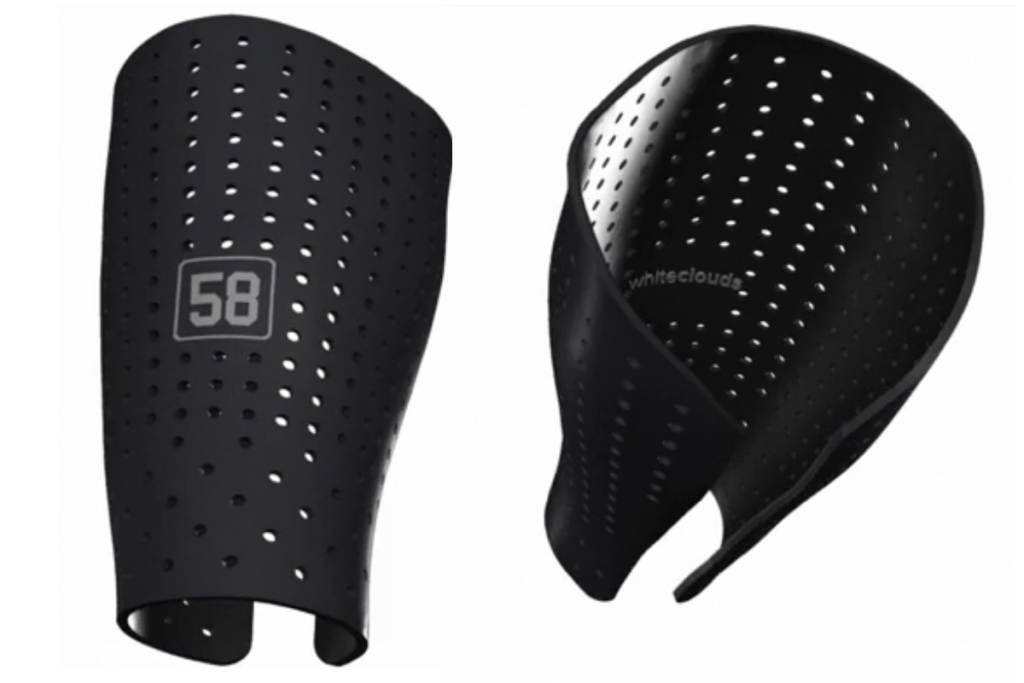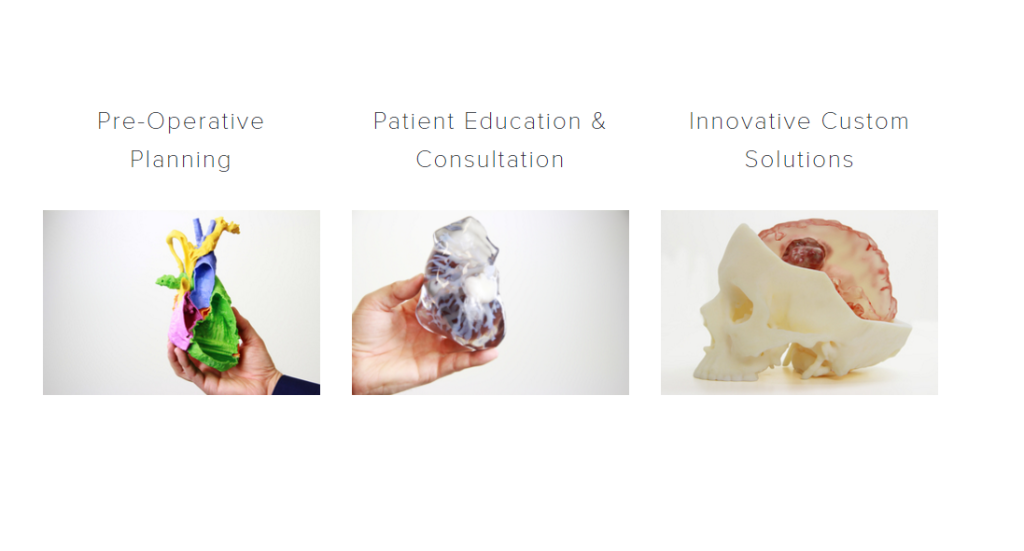Unique Opportunities in 3D Printing for Patient-Specific Healthcare — A Few Questions For: Whiteclouds
 Some may say that those crying out that 3D printing is the key to the next industrial revolution have their heads in the clouds — but is that always such a terrible thing? After all, great things have come from the clouds, and no big goals have ever been fulfilled without first having big dreams. The cloud is also famous in itself, in a different sense, as an environment that can house tech and other capabilities, freeing us from the tethers of hard storage.
Some may say that those crying out that 3D printing is the key to the next industrial revolution have their heads in the clouds — but is that always such a terrible thing? After all, great things have come from the clouds, and no big goals have ever been fulfilled without first having big dreams. The cloud is also famous in itself, in a different sense, as an environment that can house tech and other capabilities, freeing us from the tethers of hard storage.
Bringing these cloudy concepts together is a company we cover often — Utah-based Whiteclouds certainly has some big plans in store, as they continue to see growth through acquisitions, expansions through new areas of business, and even building up areas where they see potential that potential users may not yet have recognized. From stunningly elaborate architectural models to looks to the stars, Whiteclouds seems poised to do it all — and now they’re looking toward medical model applications, which as we’ve seen time and time again provide incredible opportunities to those in healthcare, patient and surgeon alike.
Wanting to find out more, I welcomed the opportunity to pose A Few Questions For Jerry Ropelato, CEO of Whiteclouds, so our readers could find out more about the company’s history and plans going forward.
Can you fill us in on the history of Whiteclouds? What might we not know about how the company came to be?
After 12 years as Founder/CEO of Purch, it was time to do another startup, and having started seven other tech startups, our preference was to stay in tech and to pick the right growth area – which for us was easy given the hype and potential surrounding 3D printing. From there, our goal was to have a company providing 3D printing solutions in the cloud – hence the name Whiteclouds – and we set out to build out software and an entire 3DaaS platform that redefined the 3D printing space in cloud environments. And through the continued growth of our unique, standout cloud-based value proposition, as well as strategic acquisitions such as 3DPlusMe, we have been able to expand into new printing areas, attract new clients, bolster our abilities across the board and to create some of the best 3D printed projects on the market today.
We’ve heard a lot about Whiteclouds’ activities in 3D printing, from the wrist brace worn for the Super Bowl to acquisitions to a new facility to architectural models, including one used in a murder trial, among many others. How does Whiteclouds decide which markets to enter? Which have been especially successful? Any surprises?
We look for unique opportunities in new and upcoming areas that have no clear leaders and in areas that we believe we can win, contribute distinctly and ultimately redefine and expand. Sometimes this requires us to seed the market – such as 3D medical printing and architecture – basically fueling interest in “what can be done” by showing the opportunities that can be unlocked and the benefits that businesses and end-users will enjoy. Furthermore, we try and identify methods to create repeatable business such as colorized and personalized end-consumer product models as opposed to one-off prototyping – although there is certainly value in this vein as well.
As with any emerging category, there always seems to be a host of surprises waiting to be uncovered. One such instance for us, that we learned a lot from early on was to focus on a B-to-B model; working with businesses to help them succeed with their end-consumer base as opposed to trying to build out our own consumer base. After all, Whiteclouds is 3D printing company in the Cloud for businesses.
 Whiteclouds is working with 3D printed medical models now; how big a segment is this expected to be for the company?
Whiteclouds is working with 3D printed medical models now; how big a segment is this expected to be for the company?
We believe this market will be huge, but will take time – 233 Million CAT scans, MRI’s, and ultrasounds are performed annually in the US. Many surgeons and medical professions feel 3D printing will be the next modality in Medical – first it was X-Rays, then CAT scans, then Magnetic Resonance – now 3D printing.
Do you foresee a true ‘revolution’ as 3D printing makes a bigger impact on patient-specific healthcare?
We believe there are at least 5 areas where 3D Printing will have an impact in healthcare: medical models, medical guides, implants, bioprinting, and 3D printed drugs.
If so, what do you think Whiteclouds’ place in that revolution will be?
Whiteclouds will be focused in the medical models area – providing solutions for patient education and empowerment, surgical planning, and clinical simulation and practice before surgeries. We are finding there are a number of obstacles related to the creation of medical models including:
- Lack of insurance reimbursement (currently no CPT codes)
- Segmentation bandwidth and expertise (selecting the Anatomy to print via CAT Scans and MRI’s),
- Implementation of 3D printing equipment, materials, and human expertise.
Whiteclouds is working to help provide solutions to overcome these challenges.
What does the next year look like for Whiteclouds — anything we should be looking forward to soon? What about longer-term?
In 2016, we will be announcing some major partnerships as well as some new product offerings. The 3D printing industry is very fragmented today with lots of startups and smaller – albeit intriguing – companies all trying to compete in new areas where dollars have not been allocated. Long term, we may be involved in rolling up some of these companies through acquisitions.
It certainly seems we can look forward to more great applications for 3D printing technology from Whiteclouds, which may have the potential to impact more facets of life. Through overcoming challenges and establishing the company and the technology in the medical model arena, Whiteclouds is seeking to provide tangible benefits that may soon be seen in medical practices near you.
Subscribe to Our Email Newsletter
Stay up-to-date on all the latest news from the 3D printing industry and receive information and offers from third party vendors.
You May Also Like
Gorilla Sports GE’s First 3D Printed Titanium Cast
How do you help a gorilla with a broken arm? Sounds like the start of a bad joke a zookeeper might tell, but it’s an actual dilemma recently faced by...
Nylon 3D Printed Parts Made More Functional with Coatings & Colors
Parts 3D printed from polyamide (PA, Nylon) 12 using powder bed fusion (PBF) are a mainstay in the additive manufacturing (AM) industry. While post-finishing processes have improved the porosity of...
$25M to Back Sintavia’s Largest Expansion of Metal 3D Printing Capacity Since 2019
Sintavia, the digital manufacturing company specializing in mission-critical parts for strategic sectors, announced a $25 million investment to increase its production capacity, the largest expansion to its operations since 2019....
Velo3D Initiates Public Offering in a Bid to Strengthen Financial Foundations and Drive Future Growth
Velo3D (NYSE: VLD) has been among a number of publicly traded 3D printing firms that have attempted to weather the current macroeconomic climate. After posting a challenging financial report for 2023,...

































